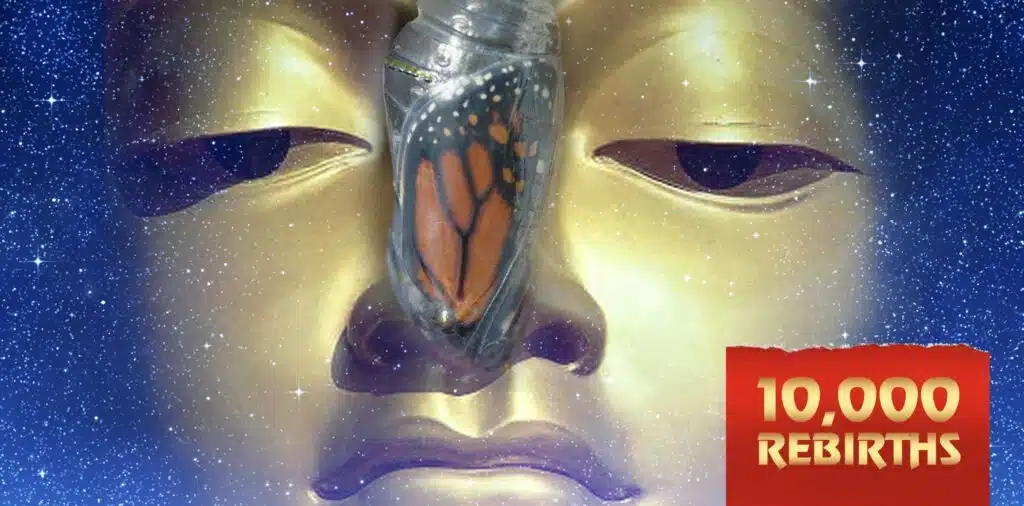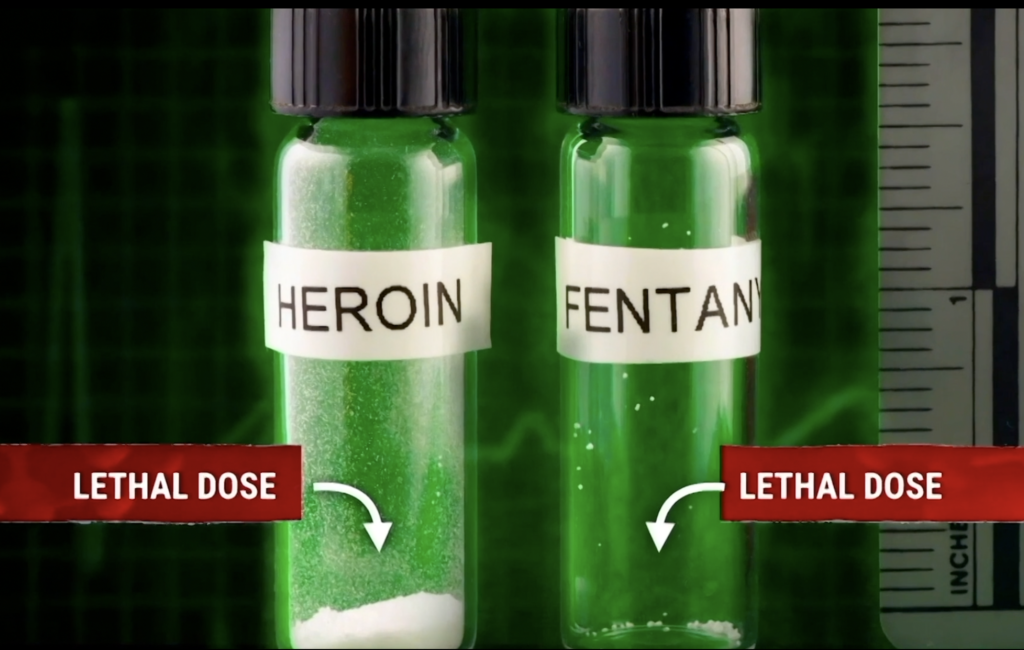10,000 REBIRTHS
A Philanthropic Proposal to End Addiction & Save Lives
In 2023, more than 100,000 people died of overdose in the US. In 2024, FEAT, Awake.net’s Fund for Entheogenic Addiction Treatment, is initiating a countermovement called 10,000 Rebirths, a grass-roots campaign to save lives by ending addiction one ibogaine treatment at a time.
LEARN MORE
THE CASE FOR IBOGAINE
The United States is faced with a nationwide overdose epidemic, which has killed over 107,000 people in 2023 alone. To put that in perspective, in twelve years of war in Vietnam, the US lost half that amount — 56,000 Americans. Ibogaine is a psychedelic root bark extract that can interrupt hard addictions like crystal meth, opioids, and alcohol in a single treatment, and eliminates withdrawals. And yet this powerful medicine remains mislabelled as a Schedule 1 harmful narcotic drug, thus making it inaccessible and uninsurable.
The Western rehab model is raking in billions, yet its success rate for sustained recovery is dismally bad, estimated to be in the low single digits for sustainable recovery at one year for first-timers. Ninety percent of Ibogaine patients on the other hand, given the proper pre- and post-treatment care, have been shown to effectively stay clean up to one-year post treatment.
What the US rehab model could only dream of doing for a patient after 90 days, ibogaine can do in less than 24 hours, with no craving and no post-addiction withdrawal (PAWS) syndrome.
Now that is nothing short of a miracle. This data has been known since 1962. However, It is not in Big Pharma’s financial interest to reschedule ibogaine. Addiction, touted as a disease without a “cure,” is a 35 billion dollar repeat business.
THE FEAT PILOT PROGRAM
It could be a decade before ibogaine becomes legal in the US, so we created FEAT, the Fund for Entheogenic Addiction Treatment. Our non-profit mission is to raise funds to send people to places where ibogaine is legal or decriminalized and administered by experienced providers who follow best practices for Ibogaine safety. If you are suffering from substance use disorder and would like to interrupt your addiction using ibogaine please apply for a FEAT grant.
FEAT applicants will be enrolled in Change Your Character: Nine Months to Rebirth, a powerful integration program taught by mentors & masters from the entheogenic and addiction recovery community. The program is designed to support candidates through crowdfunding, (if necessary) clinic selection, travel, precare & detox, ibogaine treatment, and long-term aftercare integration.
WHERE THE MONEY GOES
$7,500-10,000 ibogaine treatment +10-day stay at approved clinic
$500 Awake.net administrative fees
$900 tuition for nine-month Change Your Character course
$1,100 preparation, integration, detox, therapy, or addiction recovery coaching credits
$2,000 or greater is payable by applicant so that they have skin in the game.

FAQ
What Is the FEAT Program?
The Awake FEAT (Funding Entheogenic Addiction Treatments) Program was created by Lakshmi Narayan, founder of Awake.net, a 501(c)(3) charitable non-profit, to provide financial aid for people to recover from opioid addiction. The treatment we subsidize uses ibogaine, a plant medicine that can interrupt cravings in a single session and reduce or eliminate withdrawal. It has been used since 1962 both underground in the US, and at clinics and ceremonies abroad where ibogaine is legal or decriminalized. The FEAT Program fills a gap in the current system that does not provide insurance coverage for ibogaine treatments or even legal access.
What is Ibogaine?
Ibogaine is possibly the missing link in the conventional addiction recovery pathway, perhaps the reason why traditional rehab has a 93% failure rate. Ibogaine is a whitish powder that is extracted from the root bark of the Tabernathe iboga shrub and the leaves of the Voacanga africana bush. When Ibogaine HCL is administered in a flood dose to opioid addicts, it interrupts addiction in one treatment and resets the individual to a pre-addicted state. It also takes the person on an inner journey lasting up to 32 hours where profound insights are had and renewed energy for life is made possible. While ibogaine does have mind-altering qualities, it is not like other psychedelics for many reasons. For one thing it is more akin to a lucid dream-like experience than a psychedelic vision such as that created by psilocybin or ayahuasca. Secondly, ibogaine also acts on the physiology and “scrubs’ the receptors and resets brain lesions and neurons during the active phase of the treatment thus completely resetting the individual to a pre-addicted state. Thirdly, unlike other psychedelics, ibogaine cannot be taken in a recreational setting. Not only does it cause nausea and ataxia during the active phase, it also increases the QT interval or gap between heartbeats, thus representing a potentially fatal cardiac risk for some people with pre-existing cardiac conditions or other co-morbidities in their system. Iboga, in root bark form, has been used by the Pygmies and the Bwiti people in West Africa for centuries as an initiatory sacrament for a rite of passage into adulthood.
Why is ibogaine illegal in the US?
Because Ibogaine is a psychedelic, it was misclassified in 1970 when the Controlled Substances Act criminalized all psychedelics as dangerous Schedule 1 drugs with “no currently accepted medical use and a high potential for abuse.” Both counts are untrue, especially with Ibogaine. True, it IS a psychedelic, and Ibogaine can be dangerous, even fatal, if not administered safely, but it has great medicinal value: It’s the only medicine known to man that can actually INTERRUPT severe addictions like opioid or meth and restore the body, mind, and spirit to a pre-addicted state, sometimes within minutes of taking the medicine. There is no other medicine like it that we know of. While other psychedelics like ayahuasca and psilocybin may offer profound psycho-spiritual experiences, only Ibogaine also has a measurable physiological effect. It completely erases all traces of the addictive pathways in the body and brain. Because Ibogaine has such strong side-effects during the 12-32 hour “active” period, it is not possible to take Ibogaine in a recreational setting. It needs full-time medical supervision and monitoring of vitals during treatment, ideally in a clinic or other therapeutic setting.
What happens during an ibogaine treatment?
Most Ibogaine treatments are a week-long procedure, though there are some programs that offer more time to detox beforehand or recoup afterwards, both of which are essential aspects of care but can be handled at home as well. The active phase of the Ibogaine treatment happens in the middle of the week-long procedure and lasts 36 hours, starting with an 8-12 hour extremely active phase. During that phase one may experience ataxia (nausea upon the slightest movement) and strong waves of energy moving up the body from toe to top. At the same time one enters into a lucid dream-like visionary state where insights, guidance, and teachings are delivered on the screen of the mind. Many people report it to be a spiritual experience where they heal traumas or understand the root causes of their problems or are shown that if they don’t stop using, they’ll die. The teaching can be quite candid, as though coming from a stern father figure. As far as what’s actually going on inside these experiences and where this knowledge is coming from, that is open to interpretation, since it is different for each person. Many people report a connecting with a sense of wholeness and joy that really helps them heal and meet life again. On a neuronal level the Ibogaine repairs brain lesions and connections and strengthens the GDNF cells which deliver dopamine to the body. It also resets the molecular triggers that cause craving and withdrawal symptoms, giving opioid addicts a clean slate and a true second chance at redeeming their lives.
What happens during the Precare phase of the treatment?
The ibogaine clinic you are working with will instruct you on detox protocols and may give you short-acting opiates to sustain you during the weeks prior to treatment. Depending on what combination of prescriptions and drugs you are consuming, your detox period and protocols will vary. For example, Suboxone requires a 28-day detox period, while heroin is shorter. In addition to detoxing, the pre-care period is when you will prepare yourself psychologically for an “inner journey” that could have profound implications for your life.
What is aftercare integration?
After the ibogaine treatment, there is a period up to four months during which noribogaine is slowly released in the body from where it has been stored in the fat cells. The presence of noribogaine makes it easy to maintain sobriety and the sense of well-being you may have gained from the reset. However, in order to recover fully, patients will need to change their lives dramatically, since for many people, years of being in the grip of addiction has created a lifestyle and behaviors that all need to be reformed and the insights gained during the inner journey need to be integrated. This requires discipline, contemplation, structure, and support, such as with an addiction recovery coach or therapist, some other spiritual community, or a 12-step kind of circle. Our program includes all of the above, with a monthly online Awake Integration Circle, a nine-month self-study and mentorship program called "Change Your Character" that has weekly classes as well as access to a directory of mentors and masters who are expert at preparation, navigation, and integration of high-dose entheogenic experiences.
Who are the treatment providers?
The FEAT Pilot program (first 100 treatments) will be conducted with approved clinics who follow medical safety protocols and have a doctor on site during the active phase. If you are an ibogaine treatment provider and would like to join our community of ibogaine practitioners please contact us.
Are any medical research papers or testimonials available about ibogaine's effectiveness?
Please read personal accounts of addiction recovery using Ibogaine and learn more about the most effective way to treat and cure addiction. Research, media coverage, video, website, and testimonial links coming in February.
What happens if you only raise a part of the amount required or the applicant doesn't go through with the treatment?
The funds we raise for each applicant are kept in escrow until we have the full amount and only then is treatment initiated. In the event that we don’t raise the full amount, you have the option of receiving a refund or choosing to donate it to the FEAT general fund to go towards another person's treatment. Please indicate your preference on the donation form checkbox.


